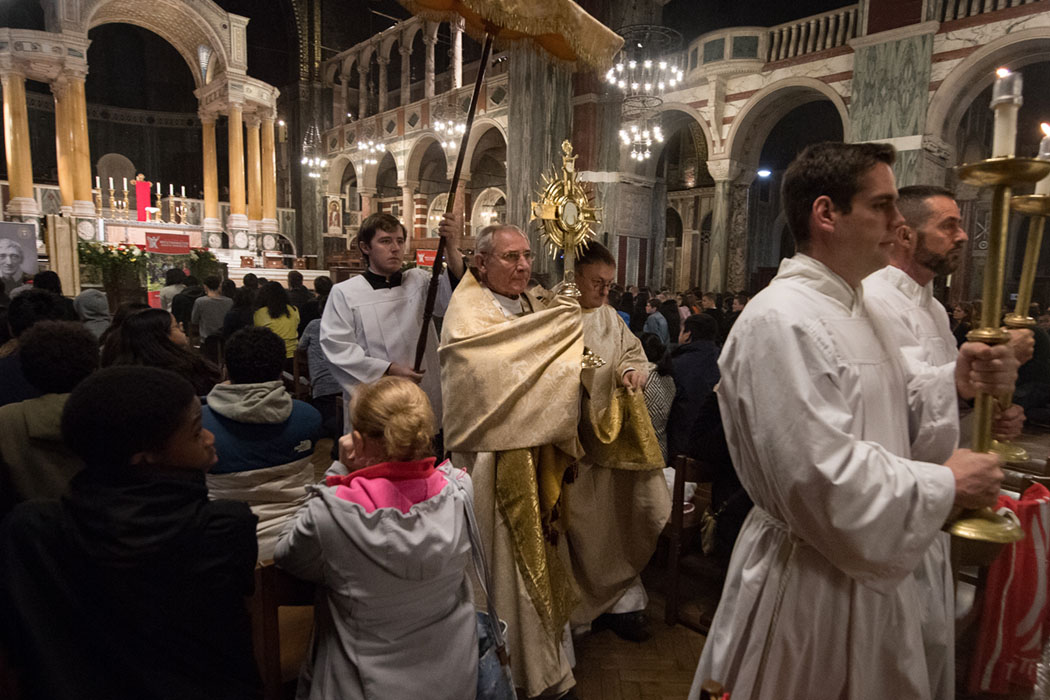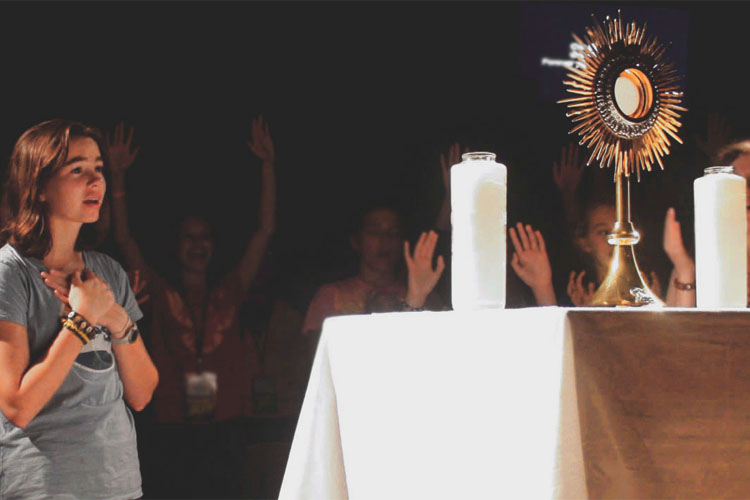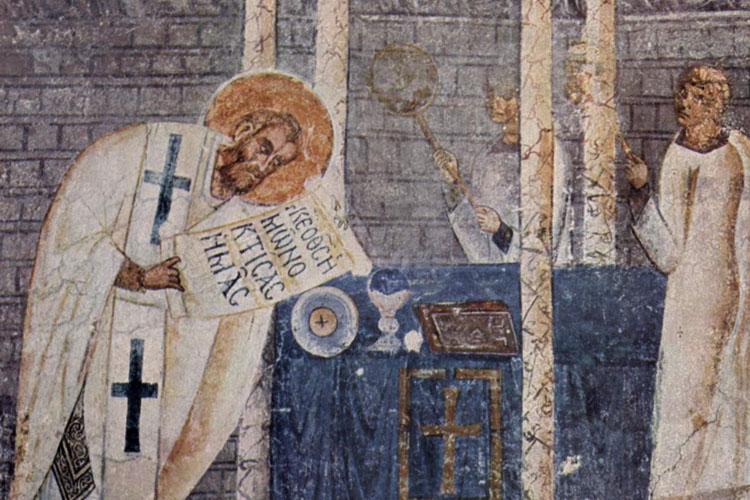
What is it?
Eucharistic adoration is the prayer form where the consecrated Eucharist is taken out of the tabernacle (the container usually near the altar which always has a candle burning beside it) and placed in the monstrance for everyone to be in the presence of and pray to. The monstrance is the big, often gold, object, generally designed like a sun. Its primary aim is the displaying of God in the Eucharist.
During adoration, you can practice many forms of prayer. This said, Eucharistic meditation is considered to be the summit of prayer; all other forms of prayer are to supplement this.
What is Eucharistic Meditation?
Simply put, Eucharistic meditation is where we focus our mind, body and spirit solely on the consecrated host and let ourselves be completely open to God without distraction. This is quite difficult and takes time and practice but ultimately leads to a powerful mystical encounter with God that is second to none.
We go about practicing it by communing directly with the Eucharist, using our senses like sight to anchor ourselves firmly in the presence of God. Here, we first work through our distractions and thoughts before then spending time in complete stillness experiencing God’s love for us. This process will then inspire us into action and personal transformation.
How do I get the most out of it?

A good place to start when in adoration is to use the form of prayer that comes easiest to you and helps to bring you most into a prayerful mindset. It helps to make sure that even during this initial stage, you stay aware and focused on God before you direct any prayer towards the Eucharist.
After the initial prayer, it is important to start building towards complete focus on the Eucharist. This will involve turning off any music, maybe looking directly and only at the Eucharist or closing your eyes to completely focus your mind on it. You may wish also to change your prayer posture so that even your physical body is adoring the Lord. Two of the most popular for this are the standing (orante) posture or the prostrating posture.
During this time, there are many ways you can continue your direct prayer to the Lord in the Eucharist. One of the simplest, but most effective, for this setting is the A.R.R.R. prayer style. This is because it allows for deep and genuine prayer with God and is useful for not losing track of your prayer.
Why do Catholics do it?
For Catholics, Eucharistic adoration, prayer and meditation are far more than simply looking at some blessed bread. During the Mass, the host is transformed into the body, blood, soul and divinity of Christ. A good analogy for this is the moment of death in reverse; while nothing physically appears to have changed, in that split second something fundamental has left the dying person while something fundamental has entered and changed the host.
It is for this reason that when we pray with the Eucharist and focus completely upon it, we are physically focusing our whole selves upon God and it’s for this reason that, after Mass, this is the most powerful and important of prayers.
This is perhaps one of the harder aspect of the faith to understand and believe. A useful way to begin to understand it is to study some of the Eucharistic miracles. These happen in many forms but for this exercise we recommend looking at some of the times the Eucharist literally turned into the body and blood of Jesus in the last 25 years.
Where can I do it?
Most churches will have a regular opportunity for Eucharist adoration and, even if they don’t, if you ask the priest for the opportunity for it they will likely support you in this. Some churches have a chapel where Eucharistic adoration is continuously available and this is almost always true in diocesan cathedrals.
What is the history?

Eucharistic Adoration is a form of prayer that dates back to the early Church. From the beginning of Christianity, we know that the Eucharist was kept after the Mass, as contemporary writers like Justin Martyr and Tertullian mention this practice in their works on the Christian faith.
That said, we don’t have evidence of this Eucharist being used in adoration until after Christianity had stopped being persecuted in the 4th century. The first written account of Eucharistic adoration is about St Basil, who would split the Eucharist into three parts and keep one part in the church for adoration.
Adoration of the Eucharist first became well-known and popular in the West due to the efforts of St Francis of Assisi and the Franciscan order he set up. Due to the poor nature of the Franciscans and their work with the peasants, they were very effective at spreading this devotion and helping people experience it.
Eucharistic adoration continues to grow as one of the most popular prayers today. There are many successful missionary efforts who simply just invite people to come and spend time with the Eucharist. While the history of the Catholic Church is bursting with miracles, far and away the most frequent are those that happen is from time with the Eucharist.
As Catholics we believe we have no greater gift in our human lives than the opportunity to experience union with God through this simple, but profound, host.